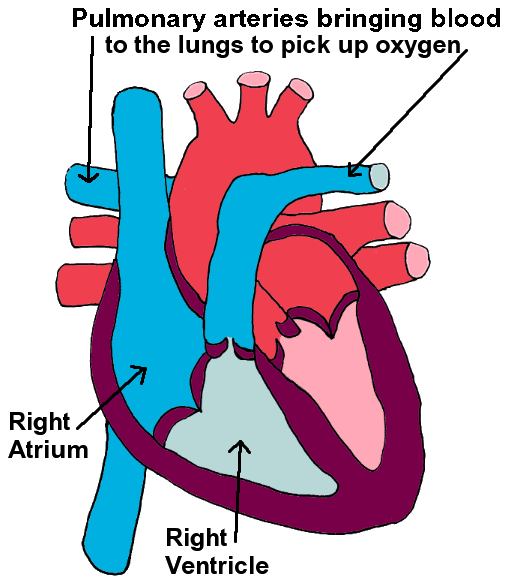|
ATENOLOL

BRAND NAME: TENORMIN
AVAILABLE IN
25 MG, 50 MG, AND 100 MG
TABLETS
|
BACKGROUND: WHAT IS A BETA-1 RECEPTOR BLOCKER?
The branch of the nervous system that covers automatic body functions such as breathing, sweating, digestion, and other similar involuntary processes is called the "autonomic" nervous system. (It may be easiest to think of the word "autonomic" to mean "automatic.")
The autonomic nervous system is divided into the sympathetic and parasympathetic nervous systems: the sympathetic system when stimulated prepares the body for "fight or flight" situations while the parasympathetic system when stimulated maintains a "status quo" state.
The fight or flight situation is more or less just what it sounds like: the body gets ready to do what is necessary to save its life. This might involve running from a predator, struggling with an enemy, or simply experiencing fear or anxiety. The actual fighting or fleeing is voluntary but there plenty of involuntary body modifications that make effective fighting or fleeing possible. The pupils dilate, the heart rate increases, blood circulation diverts from the digestive tract and towards the muscles of the legs and arms, etc. The receptors in our different organs that are involved in the sympathetic nervous system are alpha receptors and beta receptors. Atenolol concerns the beta receptors in the heart, which are called "beta-one" receptors.
When the heart's beta-one receptors are stimulated, the heart rate increases and the heart begins to pump with greater strength. This is all well and good in a fight or flight situation but for everyday life, it is stressful to the heart and can lead to unnecessary heart muscle fatigue. In regular life, it might be a good idea to think about blocking beta receptors and restoring the body's balance.
As one might guess, if there are beta-one receptors, there are also "beta-two receptors". When stimulated, beta-two receptors serve to relax the airways of the lung (for deeper breaths), facilitate fat mobilization, thicken salivary secretions, as well as perform other actions. Atenolol is a beta-one blocker and is not involved with the beta-two receptors. Atenolol blocks the function of only the beta-one receptors, ultimately slowing the heart rate down to promote better heart chamber filling and to reduce rhythm problems that happen when the heart rate races.
|

Normal Heart
(original graphic by marvistavet.com) |
HOW THIS MEDICATION IS USED
Certain heart diseases, such as subaortic stenosis of dogs, and hypertrophic cardiomyopathy of cats, involve the development of thickened, inflexible heart muscle. These heart diseases can benefit from what is called "beta blockade." This means that atenolol can relax the stiff heart muscle and slow the heart rate, allowing for more efficient filling of the heart chambers.
Atenolol might also be used in the treatment of high blood pressure or to treat heart arrhythmias where the heart rhythm is simply too fast (and the heart does not have time to properly fill between beats).
Sometimes atenolol is used in preparing feline patients for surgical treatment of hyperthyroidism, where there is often heart disease as described.
Atenolol is typically given twice daily. It may be given with or without food. If a dose is accidentally skipped, do not double up on the next dose. Simply pick up at the next scheduled dose and continue with therapy.
If side effects become a problem or if the decision is made to discontinue atenolol for some other reason, atenolol should not be abruptly stopped. It should be tapered off over 1-2 weeks.
Atenolol is given when the heart rate needs to be slowed down and/or when blood pressure needs to be dropped.
SIDE EFFECTS
The most common side effects are listlessness, diarrhea, and possibly vomiting. These issues should be mild and temporary and, as long as they are mild and temporary, they should not be concerning. If these side effects seem overly problematic, consult your veterinarian.
More serious side effects involve the heart rate and/or blood pressure dropping too low and creating actual fainting spells or collapse. If anything like this is seen, notify your veterinarian at once.
Atenolol can interfere with blood sugar regulation in diabetic patients.
Other beta blockers have created problems facilitating airway constriction in asthmatic patients but atenolol, being specific to beta-one receptors at usual doses, should not have this problem. That said, atenolol should be used cautiously in patients with asthma.
INTERACTIONS WITH OTHER DRUGS
There are a fair number of medications that can interact with atenolol so it is important that your veterinarian knows all medications your pet is taking.
- The action of atenolol can be blocked by drugs that work to encourage the sympathetic nervous system. Similarly, atenolol, as a beta blocker, may block or interfere with the effects of other drugs. Such drugs include: phenylpropanolamine (used for urinary incontinence) and terbutaline (an airway dilator).
- Atenolol can lower blood pressure. Combining atenolol with other medications that drop blood pressure can create a much greater than expected drop in blood pressure. Such medications include: prazosin, amlodipine (or other similar calcium channel blockers), and acepromazine (a common tranquilizer).
- Antacids may reduce GI absorption of atenolol. They should be given several hours apart.
- Furosemide, a common diuretic, can exacerbate atenolol's potential to disrupt blood sugar regulation.
CONCERNS AND CAUTIONS
- Atenolol should not be used in patients in heart failure. These patients need their hearts to be beating with appropriate strength and speed and can destabilize if this is disrupted.
- Atenolol can disrupt blood sugar control in diabetic patients.
- Atenolol should be stored at room temperature and should be protected from light.
- Atenolol should be avoided in patients with kidney failure.

Short version (to help us comply with "Lizzie's Law")
Page posted: 1/10/2013
Page last updated: 6/24/2025
|